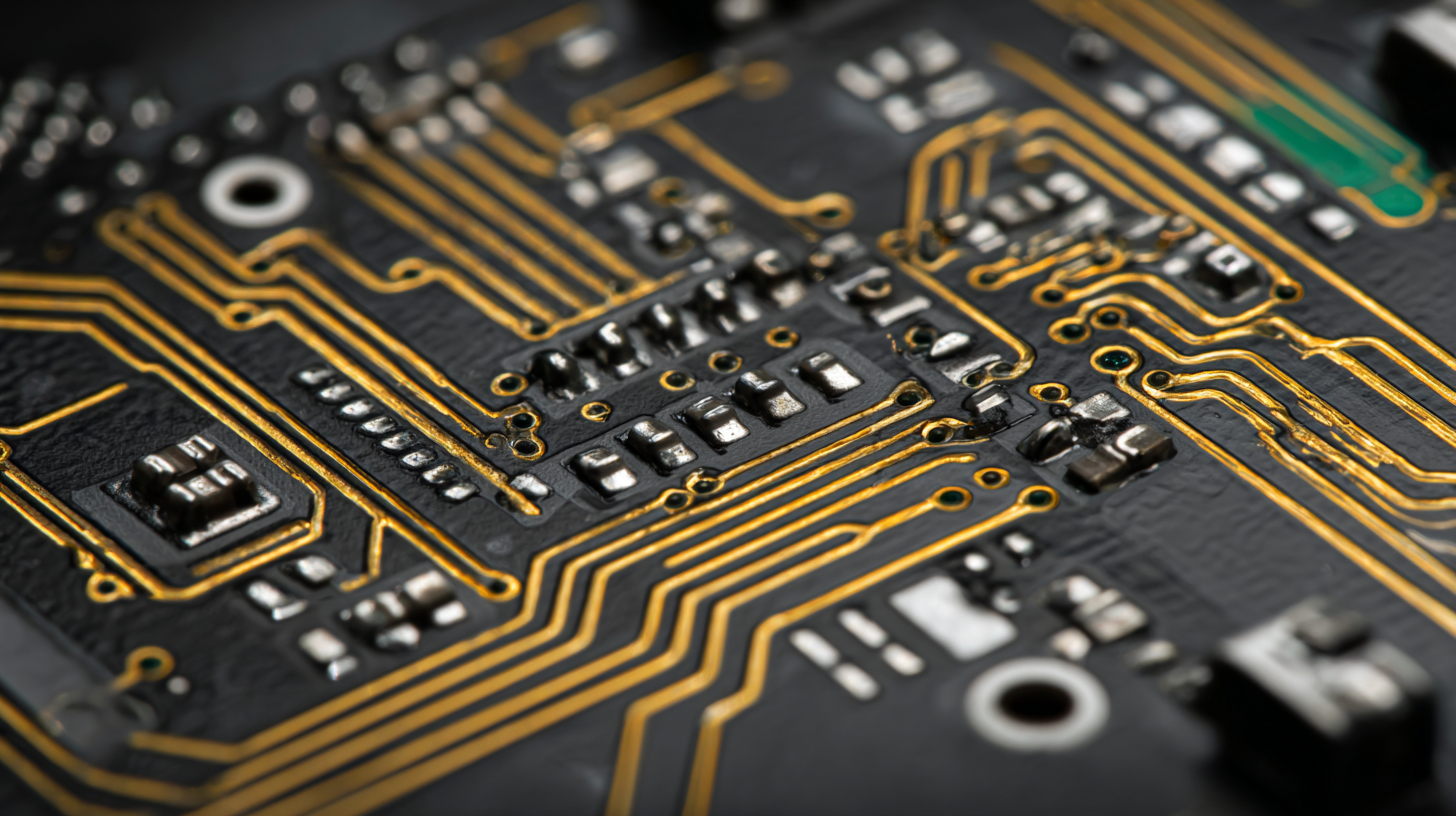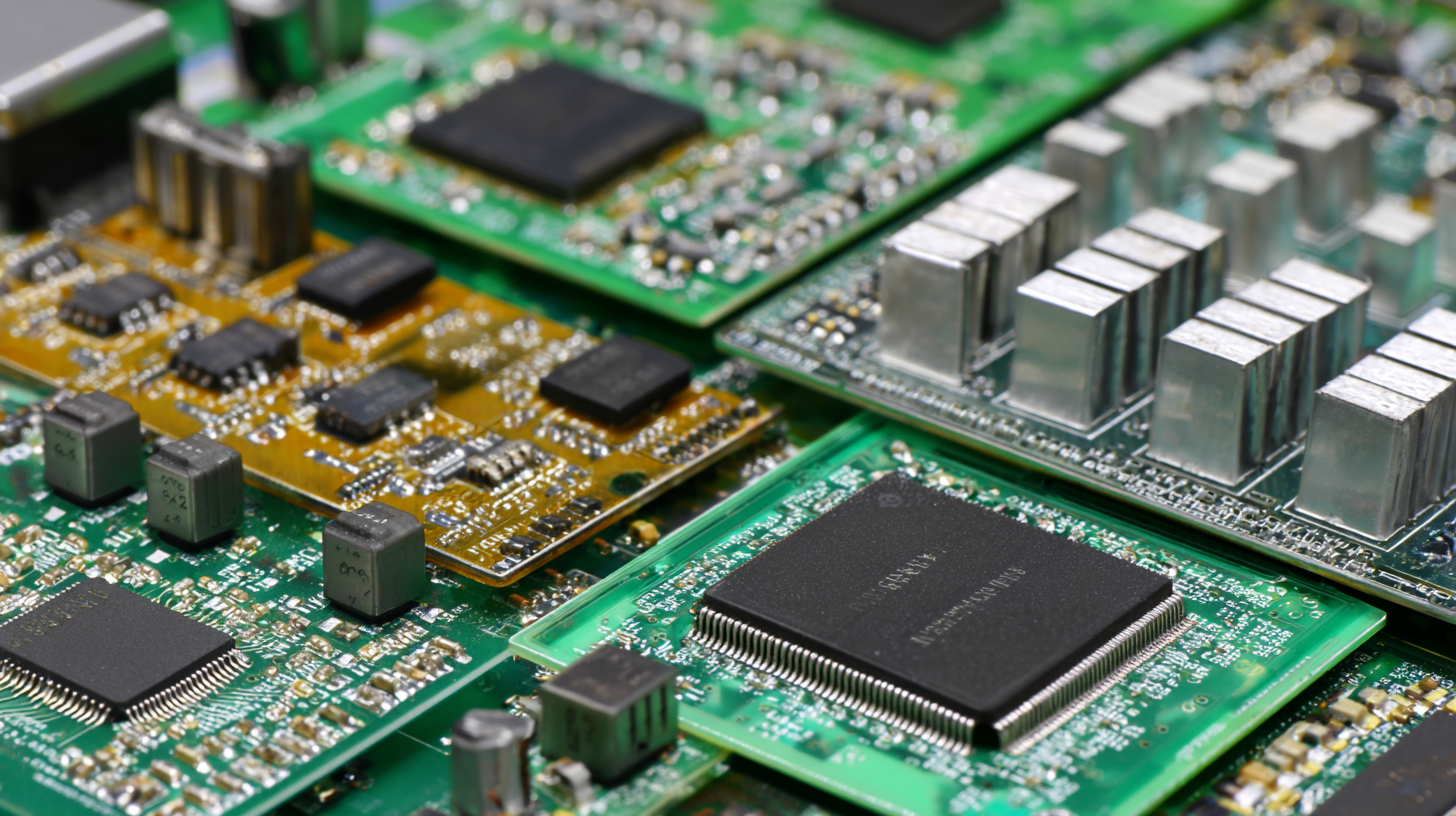Ultimate Guide to Choosing the Best Flexible Printed Circuit Boards for Your Projects
In today's fast-paced technological landscape, the demand for innovative and efficient components is ever-increasing, making the
Flexible Printed Circuit Board (FPCB) a crucial element in modern electronic designs. Originating from top-tier factories in China,
these boards not only exemplify cutting-edge manufacturing processes but also embody the
strength and reliability that global industries have come to trust.
This ultimate guide aims to illuminate the essential aspects of choosing the best FPCB for your projects,
providing insights into design considerations, material choices,
and the advantages of integrating FPCBs into your electronic systems. Whether you are an engineer, designer, or entrepreneur,
understanding the intricacies of FPCBs is key to leveraging their potential and ensuring the success of your technological endeavors.
Understanding Flexible Printed Circuit Boards: Key Features and Benefits
Flexible Printed Circuit Boards (FPCBs) have revolutionized the electronics industry by offering unique features that cater to the increasing demand for compact and lightweight devices. These flexible circuits are typically made from polyimide or polyester substrates, allowing them to bend and twist without compromising performance. According to a report by ResearchAndMarkets, the global market for FPCBs is projected to reach USD 27.02 billion by 2027, growing at a CAGR of 10.5% from 2020. This growth is largely driven by advancements in consumer electronics, automotive applications, and medical devices, where space-saving designs are increasingly crucial.
One of the key benefits of FPCBs is their versatility in complex designs. Their ability to be integrated into three-dimensional assemblies enables manufacturers to create innovative products that maximize functionality while minimizing size. Furthermore, FPCBs are known for their durability; they are resistant to vibration and temperature fluctuations, making them ideal for applications in harsh environments. A study from the Flexible Printed Circuits Association (FPCA) highlights that FPCBs can offer weight reductions of up to 60% compared to traditional rigid PCBs, positioning them as a preferred choice in industries that prioritize efficiency and performance.
Types of Flexible Printed Circuit Boards: Choosing the Right One for Your Application
When selecting flexible printed circuit boards (FPCBs) for your projects, understanding the different types available is essential to ensure optimal performance. FPCBs can generally be classified into three main types: single-sided, double-sided, and multi-layered. According to the "Flexible Printed Circuits Market Analysis" by Research and Markets, the demand for multi-layer FPCBs is projected to grow substantially, as they provide increased circuit density and improved signal integrity, making them ideal for high-performance applications such as smartphones and medical devices.
Beyond the basic types, material choice significantly impacts the application. Polyimide and polyester are the most commonly used substrates, with polyimide favored for its thermal stability and superior mechanical properties. Data from the “Global Flexible Printed Circuit Board Market” report highlights that polyimide-based FPCBs dominate the market, accounting for over 50% of the total share in 2022. This preference is largely due to their ability to withstand extreme conditions, which is crucial in industries such as aerospace and automotive where reliability is paramount. Thus, understanding the types and materials of FPCBs can help you make informed decisions tailored to your specific project requirements.
Market Trends: Growth Potential of the Flexible PCB Industry by 2025
The flexible printed circuit board (FPCB) industry is poised for significant growth as we approach 2025. With the global ICT testing probe market estimated at $379.6 million and projected to reach $614.36 million by 2033, it is evident that advancements in technology and an increase in electronic devices are driving this demand. The need for lightweight, space-saving circuit solutions has further catalyzed the adoption of flexible PCBs across various sectors.
When selecting flexible printed circuit boards for your projects, consider the following tips: First, assess the application's specific requirements, including size, weight, and environmental conditions. This will help you choose the right materials and design features. Secondly, look for manufacturers that prioritize quality and reliability; certifications can be a good indicator of a reputable provider. Lastly, stay informed about industry trends and innovations to ensure your projects leverage the latest technology advancements.
The anticipated compound annual growth rate of the flexible PCB antenna market at 7.2% emphasizes its crucial role in modern electronics. As the industry evolves, focusing on customization and differentiation can provide competitive advantages. Investing in scalable designs and exploring advanced packaging techniques will not only ensure better performance but also cater to the increasing demand in various applications.

Technical Considerations: Material Selection for Enhanced Performance in FPCBs
When selecting flexible printed circuit boards (FPCBs) for your projects, the choice of materials is critical for enhancing performance. The flexible substrate market is projected to experience significant growth, with estimates indicating an expansion from $5.78 billion in 2024 to $9.75 billion by 2033, driven by advancing technologies and increasing demand across various applications such as displays and photovoltaics. The underlying materials, including plastic, metal, and glass, each offer unique benefits that can dramatically impact the functionality and durability of FPCBs.
Material selection goes beyond functionality; it also involves understanding the latest innovations in recycling and composite engineering. For instance, advanced techniques in microrecycling are being explored to convert waste flexible printed circuit boards into valuable materials like O- and N-doped activated carbon, which showcases promising supercapacitance performance. Additionally, surface composite engineering of polyimide can create amine functionalities that facilitate autocatalytic metallization, a process crucial for enhancing electronic connections on FPCBs. Such advancements not only contribute to performance enhancements but also present environmentally friendly solutions in an industry increasingly aware of its ecological footprint.

Cost Analysis: Balancing Quality and Budget in Your Flexible PCB Projects
When embarking on a project involving flexible printed circuit boards (PCBs), understanding the cost implications is crucial. The landscape of flexible PCBs has dramatically evolved, enabling enthusiasts and professionals alike to access high-quality options at varying price points. Careful cost analysis is essential to strike a balance between quality and budget. By evaluating material choices and manufacturing methods, you can maximize performance without overspending.
Recent advancements in micro-sized flex technologies are indicative of this balance. As these innovations become more accessible, creators are discovering that they can achieve commercial-quality results with reduced costs. This democratization of technology means that even small-scale or hobbyist projects can benefit from the same flexibility and durability previously reserved for larger manufacturers. Exploring the right suppliers and understanding the features of affordable PCB options can significantly impact your project's overall success while keeping finances in check.
Ultimate Guide to Choosing the Best Flexible Printed Circuit Boards for Your Projects
| Parameter |
Low Cost ($) |
Medium Cost ($) |
High Quality ($) |
| Material Type |
Polyimide |
PTFE |
High-Density Interconnect (HDI) |
| Layer Count |
1-2 |
2-4 |
4+ |
| Minimum Traces/Spacing |
6 mil / 6 mil |
4 mil / 4 mil |
2 mil / 2 mil |
| Surface Finish |
OSP |
ENIG |
Immersion Silver |
| Typical Lead Time |
3-4 weeks |
2-3 weeks |
1-2 weeks |
| Applications |
Basic electronics |
Consumer products |
Medical devices, aerospace |